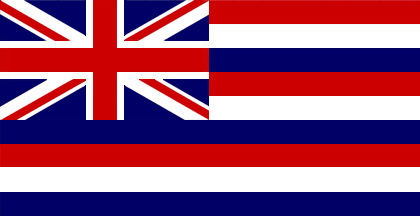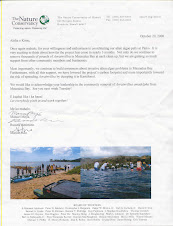Waolani is a small valley located within the larger Nu'uanu valley. Nu'uanu valley is located mauka of downtown Honolulu. O'ahu Country Club now occupies much of Waolani valley. Legend states that the e'epa people once lived in this valley. The e'epa were similar to the menehune. Both of whom were known for being active and working at night.
Many heiau including some of the earliest were located in Waolani. A holua slide may have also previously been situated at the end of a ridge that separates Waolani & Nu'uanu valleys (McAllister - Arch. of Oahu - Sites of Oahu p. 304). I believe the ridge being described is Kekoalani ridge.
One of the famous heiau here was called Kawaluna. The heiau was sacred or a Po'ohonua (Place of Refuge) to all who were sick or who suffered from a wide range of strange ailments (McAllister, Arch. of O'ahu - Sites of Oahu p. 304).
A great battle occurred in Waolani several hundred years ago between ali'i from the Ko'olaupoko and Kona districts of O'ahu. The battle ended in the submission by the Kona ali'i to Kuali'i, the chief from Ko'olaupoko and also the mo'i of O'ahu at that time. Kuali'i than returned to Kailua in the Ko'olaupoko district. This battle was called the "Battle of Kawaluna" (Fornander, Polynesian Race, Vol. II - Sites of O'ahu p. 304).
The Kawaluna battle was in Waolani valley in the Kona district and the winner of this battle was an ali'i from the neighboring Ko'olaupoko district on the opposite (windward) side of the Ko'olau mountains. In speculation on my part, the Kona chief(s) must have felt a strong resentment towards Kuali'i (even with his status as mo'i of O'ahu) to come into their district and exert authority over them on their own grounds. The resentment (or other unknown reason) was obviously strong enough on the Kona chief(s) part to cause them to attempt to resist Kuali'i.
Wednesday, December 27, 2006
Wednesday, December 20, 2006
Makahoa Point
Northern point of the Malaekahana ahupua'a in the Ko'olauloa distrct of Oahu. A fishing shrine for the 'o'io fish was once located on the point. Also, a fish pond called Waipunaea was located near here. Adams field named after Andrew Adams, a Kahuku plantation manager in the early 1900's is located just inland of the point. Mokuauia island (Goat Island) lies on the opposite southern side of the bay.
Certain schools of mullet are said to originate from a place in Pu'uloa (Pearl Harbor) and swim around the southeast end of Oahu, around Makapu'u, and up the windward coast to Makahoa Point. Once they reach here, the schools of mullet disappear (McAllister, Arch. of Oahu). What happens to them is not known; although, it has been said that they may enter an unidentified sea cave or ocean tunnel.
If you have ever camped at the northern Malaekahana camp sites, you may have walked out to this point from the beach. On the way out to the point you have to cross Kaukanala'au stream which empties into the north portion of the bay. Makahoa Point is wind swept and horses sometimes graze here.
Certain schools of mullet are said to originate from a place in Pu'uloa (Pearl Harbor) and swim around the southeast end of Oahu, around Makapu'u, and up the windward coast to Makahoa Point. Once they reach here, the schools of mullet disappear (McAllister, Arch. of Oahu). What happens to them is not known; although, it has been said that they may enter an unidentified sea cave or ocean tunnel.
If you have ever camped at the northern Malaekahana camp sites, you may have walked out to this point from the beach. On the way out to the point you have to cross Kaukanala'au stream which empties into the north portion of the bay. Makahoa Point is wind swept and horses sometimes graze here.
Sunday, December 17, 2006
Pu'u o Moloka'i
Not of the island of Moloka'i, but of a small hill in the Waimanalo ahupua'a in the Ko'olaupoko district of Oahu.
Long ago a man from Moloka'i migrated to Waimanalo and took refuge on this hill. Soon after, others from Moloka'i followed and lived also on this hill. Over a period of time, these people and there descendents lost their identity as people being from Moloka'i and were absorbed by the people of Waimanalo. (Oahu Place Names - Bishop Museum)
The hill was said to have been in an old cane field in the vicinity of (across from) Waimanalo park. It would be of interest to know if Pu'u o Moloka'i disappeared long ago, if it disappeared in more recent times when residential development occurred or if the hill still exists in some way, shape or form?
Long ago a man from Moloka'i migrated to Waimanalo and took refuge on this hill. Soon after, others from Moloka'i followed and lived also on this hill. Over a period of time, these people and there descendents lost their identity as people being from Moloka'i and were absorbed by the people of Waimanalo. (Oahu Place Names - Bishop Museum)
The hill was said to have been in an old cane field in the vicinity of (across from) Waimanalo park. It would be of interest to know if Pu'u o Moloka'i disappeared long ago, if it disappeared in more recent times when residential development occurred or if the hill still exists in some way, shape or form?
Subscribe to:
Posts (Atom)








